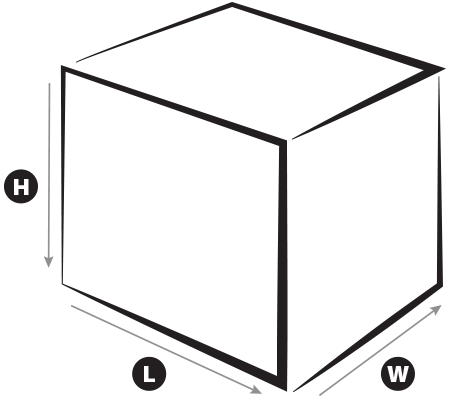About Dimensional Weight
Dimensional Weight FAQs
What is dimensional weight?
Dimensional weight reflects package density, which is the amount of space a package occupies in relation to its actual weight. Effective Jan. 5, 2015, FedEx (and UPS) uses dimensional weight pricing to all shipments. Previously, FedEx Ground applied dimensional weight pricing only to packages measuring three cubic feet or greater. In other words all FedEx Express® and FedEx Ground® shipments within the U.S., U.S. import-rated international shipments, and U.S. export shipments are subject to dimensional weight rating.
Billable weight is the weight used to calculate your rate. For domestic and international services, the billable weight will either be the dimensional weight or the actual weight of your package (whichever number is greater). Calculations of dimensional weight are subject to change without notice.
See the FedEx Service Guide for more details on dimensional weight. Nashville Wraps calculates all parcels based on their dimensional weight (billing weight).
How is dimensional weight calculated?
Dimensional weight is calculated based on the length, height, and width of the package. The dimensional weight becomes the billable weight when the dimensional weight of your package exceeds its actual weight.
Follow these easy steps to calculate dimensional weight:
-
 Calculate the cubic size of your package in inches. Multiply the
length by width by height of your package.
Round each measurement to the nearest whole inch. The resulting
total is the cubic size of your package.
Calculate the cubic size of your package in inches. Multiply the
length by width by height of your package.
Round each measurement to the nearest whole inch. The resulting
total is the cubic size of your package. - Determine actual weight. Use any standard scale to determine the actual weight of your package. Increase any fraction to the next whole pound.
- Determine dimensional weight. Divide the cubic size of your package in inches by 166 (for shipments within the U.S. and shipments between the U.S. and Puerto Rico) or 139 (for U.S. export and U.S. import-rated international shipments). Increase any fraction to the next whole pound.
- Determine billable weight. Compare the package's actual weight to its dimensional weight. The larger of the two weights is the billable weight and should be used to calculate the rate.
- For multiple-package shipments, Total the billable weight of all packages in the shipment.

